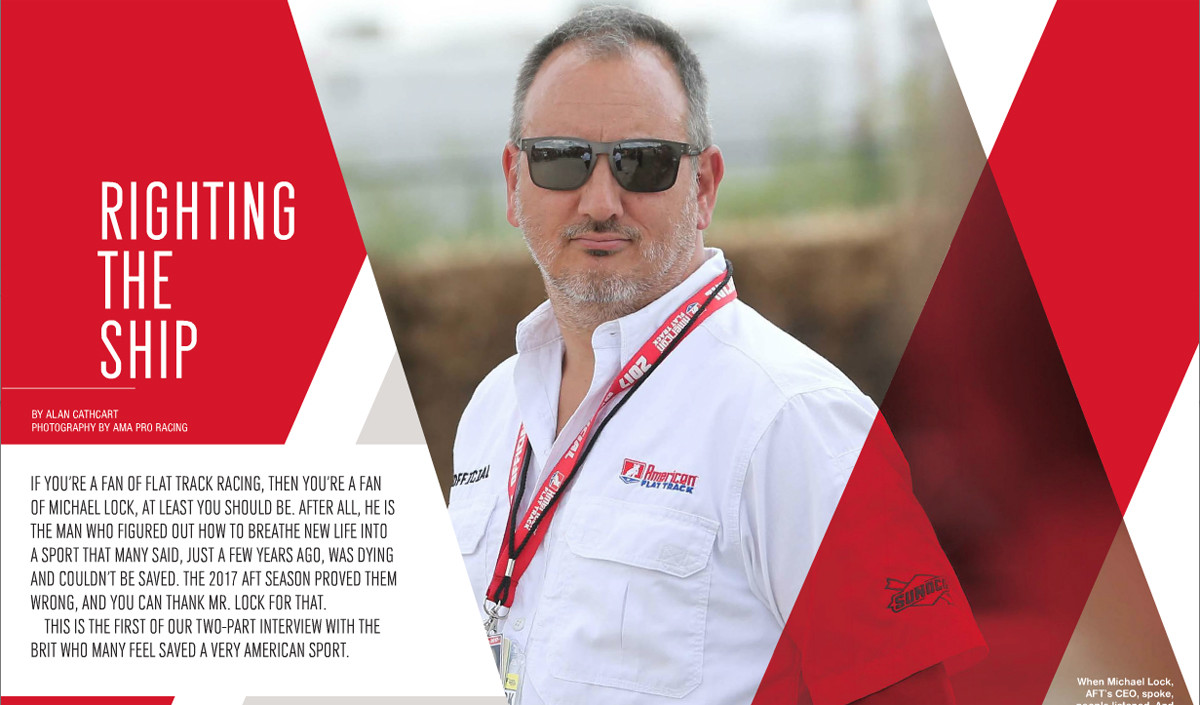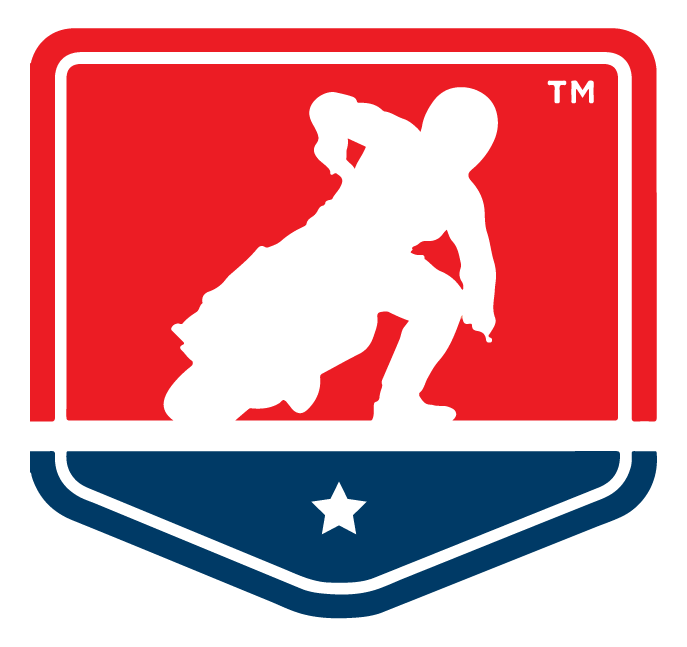
AFT In The Press: Righting The Ship - Part One
2017 was the year that America’s oldest form of motorcycle racing made its big comeback to the public consciousness, with the rebranded 18-race American Flat Track Championship hosting a resumption of the historic struggle for dirt oval dominance between Indian and Harley-Davidson. This was brought to a far wider audience than had yet followed the sport via a series of hour-long weekly primetime telecasts streamed on NBCSN, which brought the non-stop thrills and often spectaculars spills of this uniquely American race series to a whole new audience.
But it’s undoubtedly ironic that the man responsible for transforming what was previously the best kept secret of American motor sport into an accessible, slickly staged and artfully presented spectacle should be British. Michael Lock, 52, was a passionate motorcyclist from an early age growing up in London, who went to work for Honda Britain straight out of college, initially in the Parts Department before working his way up to be one of the bright young marketeers in Honda Europe. That brought him to the attention of John Bloor, who headhunted him in 1990 to work for his newly relaunched Triumph company in establishing a network of importers across Europe. In 1993 Lock was assigned the task of establishing Triumph America in Atlanta, which he ran for three years on a 24/7 basis before suffering corporate burnout, and resigning to recharge his batteries by taking an MBA degree at Cardiff University. He was then hired as CEO of Ducati UK, a key export market for the Italian company in the heyday of Carl Fogarty. However, he lasted just 90 days there before he was summoned to Bologna to offer advice on how to rescue the car crash that Ducati’s North American operation had become, which resulted in his moving back to the USA, this time to California to head up DNA. He stayed there as CEO for the next decade, building numbers until this became Ducati’s number-one market globally, in the course of which he inevitably became involved in the company’s superbike road race program. He left in 2010 to go to Norway to work with Ford’s electric satellite Think Auto, after which he returned to the USA to run Lamborghini USA—by then coincidentally Ducati’s nominal owner within the VW-Audi group. In 2015 he joined NASCAR’s motorcycle subsidiary AMA Pro Racing—but let’s hear from him how that came about.
Michael, how did a Brit end up heading the organization team for such a uniquely American branch of motorcycle sport as flat track?
Three years ago in 2014 I’d just left Lamborghini USA, and was considering my options, as they say, when I got a phone call from Jim France. His father Bill France Senior was the founder of NASCAR, and Jim and his late elder brother, Bill Junior, were responsible for turning NASCAR from a regional sport into the national powerhouse it’s become. Jim is the smart silent type, so he stays out of the public eye, but he’s been every bit as much responsible for what NASCAR has become as anyone else in the France family. Additionally, though, he has a real passion for motorcycles, particularly European ones. I’d met him when I attended the Daytona 200 after just arriving in the USA back in the mid-‘90s to do the research prior to launching Triumph here, and he’d talked about the ‘60s Bonneville he had, about coming back from the Vietnam war and readjusting to being in America, and how riding his motorcycle had given him a sense of grounding. We had this long chat together and got on very well, and so we stayed in touch down the years.
So in 2014 Jim France called me to say that he was reorganizing flat track racing. The France family essentially owns AMA Pro Racing, which is the body that sanctions all Pro Motorcycle Racing in the USA. They were then in the process of licensing road racing to Wayne Rainey’s outfit, and they had a long term contract for supercross with someone else, so now they were looking at flat track, and this, in fact, is Jim’s first love—indeed, he used to race himself, and I have his Bultaco in my office! He was an amateur flat-tracker back in the ‘70s, and I think that like a lot of flat track racers, he’d got bitten by the bug for life. And so here he had direct control of his main interest in motorcycle racing, and he was looking at why it wasn’t working properly, what to do, what the possibilities were, where investment was needed, and so on. So he said, “Please, would you consult for me, and come down to Daytona for a couple of weeks, meet the team, get to know the sport, and tell me what we should be doing.”
To read the rest of part one of Cycle New's interview with Michael Lock, click here: http://magazine.cyclenews.com/i/912289-cycle-news-issue-48-december-5-2017/38






























